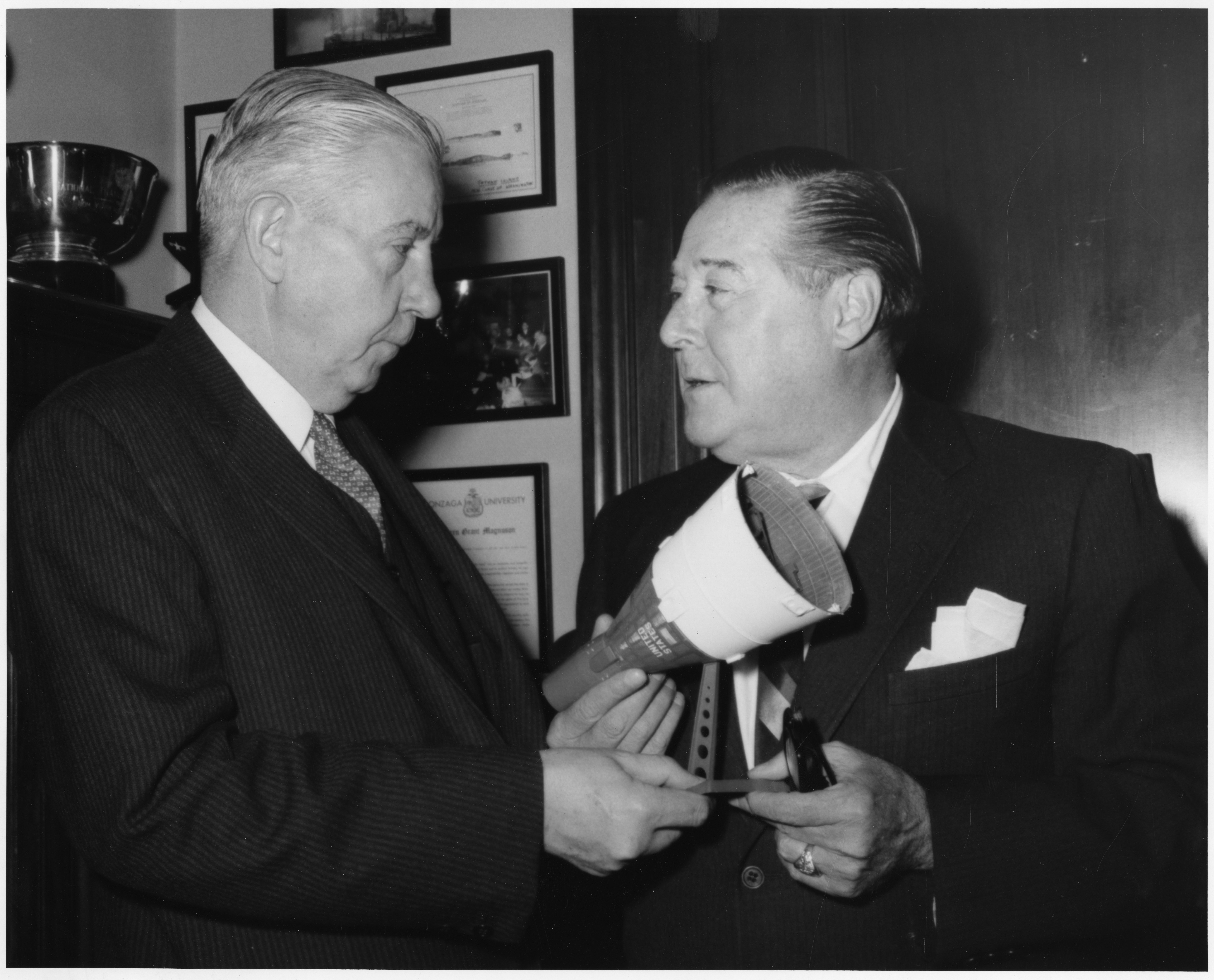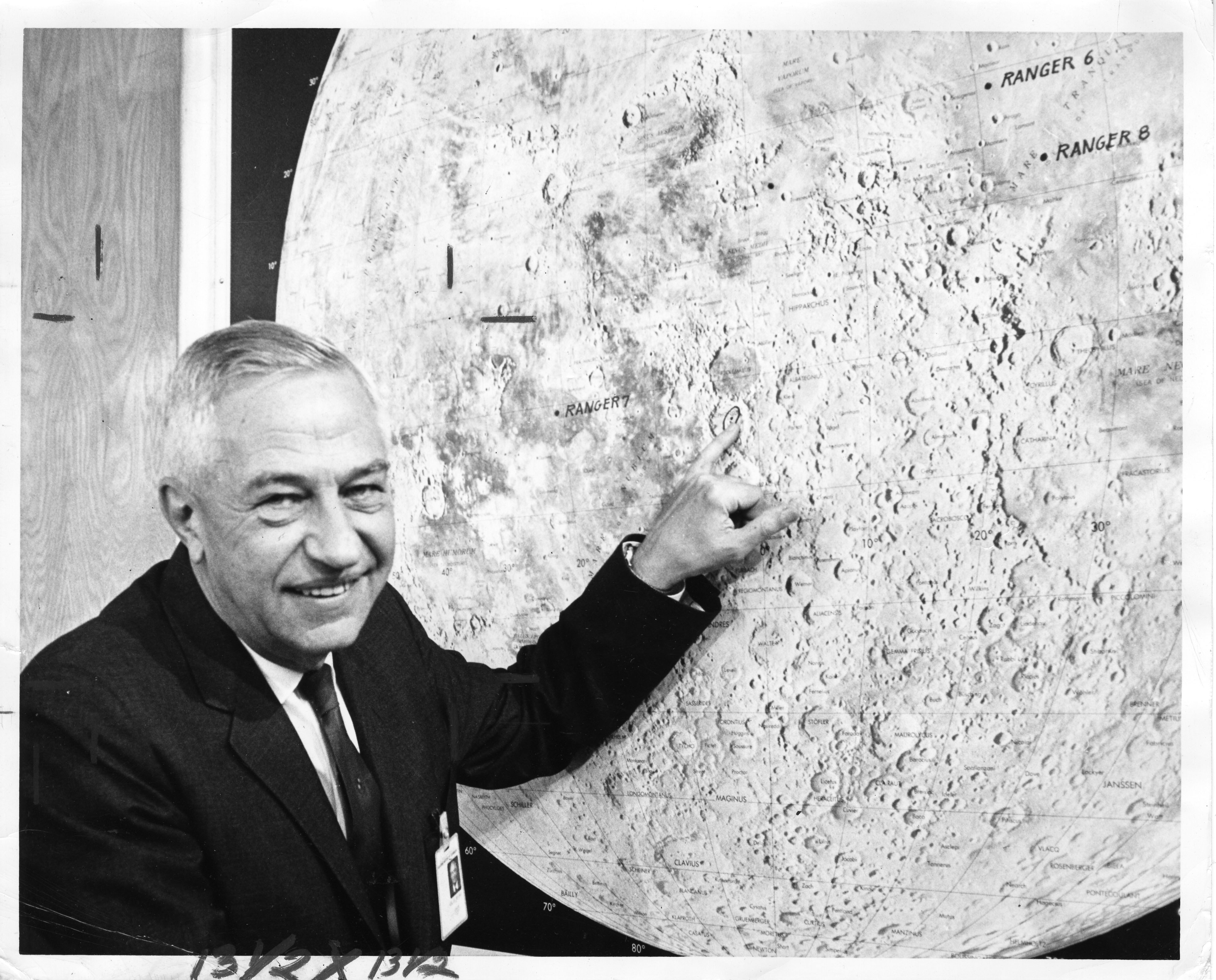May 11 is the anniversary of establishment of the White House Office of Science and Technology Policy (OSTP). That 1976 legislation further ratified the influence of scientists on national policy, positioning them to provide ready advice to the President, much as had been done, with varying formality, since before World War II.
Foremost among the advisors in the 1930s was MIT engineer Vannevar Bush (1890-1974). With a knack for administration and politics, Bush became a central player in the Washington scientific community in 1938 when he was appointed to the National Advisory Committee for Aeronautics (NACA) and then became head of the Carnegie Institution. Bush helped to arrange President Franklin D. Roosevelt’s approval for the National Defense Research Committee (NDRC) in June 1940 and oversaw the complex of secretive wartime research that produced the atomic bomb and radar.
In 1951, President Harry S. Truman established a Science Advisory Committee (SAC) in the Office of Defense Mobilization. For the next few decades, the chairman of that committee was known colloquially as the President’s “chief scientist,” available for consultation on scientific matters in general but without any such formal title. Bell Laboratories electrical engineer Oliver Ellsworth Buckley (1887-1959) served as chairman of SAC from 1951 to 1952, followed by California Institute of Technology physicist Lee Alvin DuBridge (1901-1994), 1952 to 1956.
As reflected in many photographs in the Science Service collections, the scientists who gained influence in the White House were part of a tight coterie within the U.S. scientific establishment. Even before their appointment to SAC and even if trained in different disciplines, they had frequently served together on committees, worked together on research projects, and socialized at National Academy of Sciences meetings and similar gatherings.
Columbia University physicist Isador Isaac Rabi (1898-1988) was the first Presidential science advisor to have been born outside the United States, and the only Nobel laureate (to date) among Presidential chief scientists. Rabi was SAC chairman for only one term but he was there during a critical moment in American science policy. When the Soviet Union launched its first two Sputnik satellites in November 1957, one of the American responses was to raise the public visibility of science. President Dwight D. Eisenhower changed SAC into PSAC (“President’s Science Advisory Committee”) and appointed Massachusetts Institute of Technology (MIT) president James Rhyne Killian, Jr. (1904-1988) as chairman.
Killian’s successor as PSAC chairman in 1959, Harvard chemistry professor George Bogdanovich Kistiakowsky (1900-1982), was, like Rabi, an immigrant, having arrived in the United States as a young man and become a U.S. citizen in 1933. Kistiakowsky had chaired the NRDC during World War II, and played a critical role in the Manhattan Project.
For his principal science advisor, President John F. Kennedy turned back to MIT, choosing its president, Jerome Bert Wiesner (1915-1994). As an electrical engineer, Wiesner had also been involved in the Manhattan Project, working on radar at the MIT Radiation Laboratory and briefly at the Los Alamos facility.
Another chemist, Donald Frederick Hornig (1920-2013), followed as chairman for five years, 1964 to 1969, with the additional title of Special Assistant for Science and Technology under President Lyndon B. Johnson. Although President Richard M. Nixon asked Lee Alvin DuBridge to return to the White House for one term as PSAC chairman, from 1969 to 1970, the relationship between the White House and the scientific community grew increasingly strained, influenced by domestic and international politics, until formal establishment of OSTP on May 11, 1976.
Related Resources
- Record Unit 9531, The Manhattan Project Videohistory Collection 1987-1990, Smithsonian Institution Archives
- Science Service: Up Close, The Bigger Picture, Smithsonian Institution Archives
- Vannevar Bush's Profile Tracer, National Museum of American History
- Currency autographed by Presidential Science Advisor Dr. George B. Kistiakowsky, National Air and Space Museum
Produced by the Smithsonian Institution Archives. For copyright questions, please see the Terms of Use.










Leave a Comment